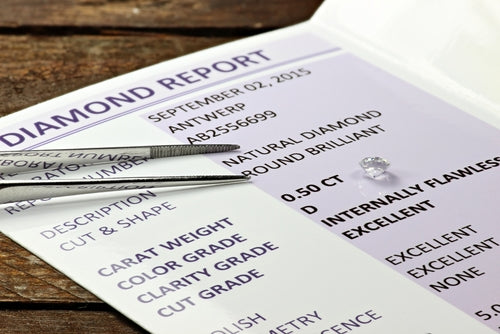
A Quick Look at GIA vs. EGL Grading
 Buying a certified diamond brings with it the definite benefit of assured quality. A certificate cites in certain terms the 4 defining characteristics of the stone it accompanies, as well as other information which might hold relevance in the event of resale. You would certainly appreciate having that assurance alongside the 1.00 carat diamond engagement ring you were buying.
Buying a certified diamond brings with it the definite benefit of assured quality. A certificate cites in certain terms the 4 defining characteristics of the stone it accompanies, as well as other information which might hold relevance in the event of resale. You would certainly appreciate having that assurance alongside the 1.00 carat diamond engagement ring you were buying.
GIA and EGL are the most popular certification laboratories in the world. EGL is short for European Gemological Laboratory, and while widely trusted, its certification standards certainly lag behind those of GIA (Gemological Institute of America). The following is some background information about both institutions.
 GIA was formed in 1931, and has since been the world’s leading authority on diamonds, serving as a source of standards, knowledge and education regarding gems and jewelry. All major diamond cities have GIA offices, and they are best known for standardizing the process of diamond grading by bringing in the 4 C’s.
GIA was formed in 1931, and has since been the world’s leading authority on diamonds, serving as a source of standards, knowledge and education regarding gems and jewelry. All major diamond cities have GIA offices, and they are best known for standardizing the process of diamond grading by bringing in the 4 C’s.
 EGL was founded in 1974, and has various international locations, with some of these falling under EGL USA. This institution is best known for grading diamonds that weigh under one carat, or fall under the “SI3” clarity rating. EGL diamonds are generally considered less expensive, but subscribes to lower standards than GIA. For instance, an EGL graded stone with F color and VS1 clarity would be equal to a GIA graded diamond of G/H color and SI1/2 clarity.
EGL was founded in 1974, and has various international locations, with some of these falling under EGL USA. This institution is best known for grading diamonds that weigh under one carat, or fall under the “SI3” clarity rating. EGL diamonds are generally considered less expensive, but subscribes to lower standards than GIA. For instance, an EGL graded stone with F color and VS1 clarity would be equal to a GIA graded diamond of G/H color and SI1/2 clarity.
